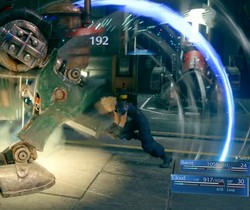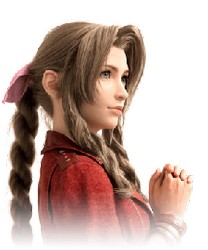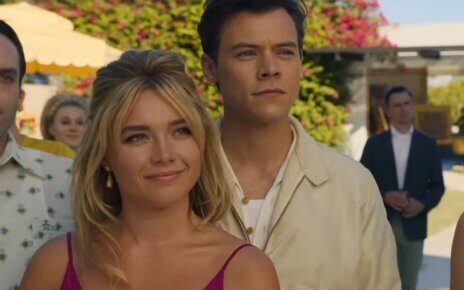These past few years in the entertainment industry, remasters, remakes, re-etc. have been produced practically as frequently as original content. It’s certainly easy to diagnose this as a dearth of creativity, but in this age of constantly adapting content for a new generation of consumers, is there a way to make—or, more appropriately, remake—a standalone piece of art based on existing media?
About ten months ago, video game publisher Square Enix released a remake of the beloved PlayStation RPG Final Fantasy VII. The controversy that normally surrounds rereleases, especially those of video games, is often related to the terminology used in promotional material. Video game fans tend to be very picky when it comes to their favorite games receiving this treatment; a remaster usually refers to a new version of an older game whose graphics and/or mechanics have been updated and enhanced for a new generation of consoles or players.
 But, a remake? A remake is built from the ground up.
But, a remake? A remake is built from the ground up.
Final Fantasy VII Remake lives up to its name: it is a true remake. The original game, released in 1997, has a tight cult following with highly devoted fans. In my eyes, Square Enix had a lot to lose when they decided to remake one of their most beloved properties. Before actually sitting down and playing through Remake, which was released last year, I had my suspicions at how Square Enix would treat the plot and characters. As we’ve seen with recent remakes (…Cats, anyone?), it can turn out very poorly for both producers and fans alike. Fortunately for everyone, though, Final Fantasy VII Remake does the improbable; even as a remake of one of the most treasured video games of all-time, it manages to stand apart from its predecessor as a separately relevant and altogether stunning piece of art.
Final Fantasy VII Remake retains the same basic plot as the first third of the original (Remake is set to be a trilogy of games released over the next few years), but the focus is much more centered on the characters, their relationships, and expanding on both. The player controls Cloud Strife, a coolly reserved mercenary living in the futuristic and dystopian city-state of Midgar, which is owned by the environmentally exploitative mega-corporation Shinra. Midgar consists of two plates: an upper plate, on which the wealthy and powerful live, and the dilapidated slums, filled with mechanical scrap, where the less fortunate are left to live in relative squalor.
Fighting against Shinra is an eco-terrorist group known as AVALANCHE, whose goal is to take down Shinra in order to stop the draining of the planet’s energy source, mako. As Cloud, who has been hired to temporarily fight for the group, the player becomes acquainted with his oldest childhood friend, Tifa Lockhart, who he hasn’t seen since before she joined AVALANCHE. Tifa is generally laid-back, but over the course of the game’s first few chapters her passion for protecting the planet and its energy becomes apparent. Also fighting for AVALANCHE is the giant Barret Wallace; though his presence is imposing (he has a gatling gun for a right hand), his ultimate goal of taking down Shinra stems from his desire to ensure a future for his young daughter Marlene. As he explains it to her, “Some bad people are trying to hurt the planet. And Daddy… Daddy and his friends are trying to stop those bad people. The slums, your friends, the whole planet—it’s Daddy’s job to protect it.” Framing Barret and the rest of the rough-hewn AVALANCHE cell as compassionate about the planet—as unwavering in their convictions to bring energy justice to Midgar—brings a level of deeper characterization to the cast than the original PlayStation version, and that is important especially concerning the depth and expansion of the plot.
 There is one character, though, who touches my heart more than any other with both her personality and her values. Aerith Gainsborough (right), the self-described “local florist,” is more of a fleshed-out character in Remake than I could have ever hoped for. Starting off as a stranger in the slums, selling flowers on the street, Aerith is the personification of the planet’s precious life force. Despite the stiff dialogue in the 1997 game, I always imagined her to be an outgoing and friendly character, exemplifying this energy in a human form. Aerith has the ability to “speak” with the planet; she can sense the fragility of the planet’s condition, and she uses this to display her sincerity in helping AVALANCHE. However, according to Aerith herself, “The Shinra Electric Power Company isn’t the real enemy. I promise you. There’s a much bigger threat. I just want to do everything in my power to help. All of you… and the planet.”
There is one character, though, who touches my heart more than any other with both her personality and her values. Aerith Gainsborough (right), the self-described “local florist,” is more of a fleshed-out character in Remake than I could have ever hoped for. Starting off as a stranger in the slums, selling flowers on the street, Aerith is the personification of the planet’s precious life force. Despite the stiff dialogue in the 1997 game, I always imagined her to be an outgoing and friendly character, exemplifying this energy in a human form. Aerith has the ability to “speak” with the planet; she can sense the fragility of the planet’s condition, and she uses this to display her sincerity in helping AVALANCHE. However, according to Aerith herself, “The Shinra Electric Power Company isn’t the real enemy. I promise you. There’s a much bigger threat. I just want to do everything in my power to help. All of you… and the planet.”
The real enemy, and perhaps the most genuinely frightening villain in any game, is Sephiroth, the thought-to-be-dead One-Winged Angel. Initially appearing only in split-second intervals as a hallucination of Cloud’s, Sephiroth’s presence becomes more and more imposing, much like a bull shark with its dorsal fin jutting out of the water. In fact, we only see him for a total of about one minute for a vast majority of the game. Like AVALANCHE, his ultimate goal is to defeat Shinra; however, he plans to use the mako energy to merge with the planet, effectively becoming it.
Though it is an abstract plot, the themes dealt with in Final Fantasy VII Remake are so much more relevant in the context of today than they were 24 years ago. Now that climate change is a proven fact of life, the situations in which our heroes find themselves are much more rooted in real life on Earth than the cyberpunk world in which they live. We know that there are, in fact, people who live in places that resemble the slums of Midgar; places filled with unsafe and rusting debris, with dangerous air quality, and with little to no economic mobility. For a game with gameplay that heavily focuses on busting up robots and monsters, Final Fantasy VII Remake is one of the most in-touch and effective metaphors for the destruction of our environment and the stratification of socioeconomic classes in recent memory.
Speaking of the gameplay of Remake: it is, in one word, stellar. Not only does the “Materia” system present in the original game still exist, it is expanded upon hugely. By fitting each of the four main characters’ weapons with orbs of energy called “materia,” different abilities, both physical and magical, offensive and defensive, become available for use in conjunction with that weapon.
 The variety in the gameplay is also incredibly unique and intuitive. Even though there are four playable characters, each with different weapons and techniques, the controls of the game remain constant, allowing you to control the swordsman Cloud, gunner Barret, fighter Tifa, and magician Aerith all with the same button layout. It’s a comfortable way to play, and it took me no more than an hour to really develop the muscle memory required for playing.
The variety in the gameplay is also incredibly unique and intuitive. Even though there are four playable characters, each with different weapons and techniques, the controls of the game remain constant, allowing you to control the swordsman Cloud, gunner Barret, fighter Tifa, and magician Aerith all with the same button layout. It’s a comfortable way to play, and it took me no more than an hour to really develop the muscle memory required for playing.
Arguably the most important aspect of the new game, to some fans, is the music. Originally composed by Nobuo Uematsu, the Final Fantasy VII soundtrack is rerecorded with remarkable fidelity to the original. The updated arrangements, which include electric guitar and an orchestra, are designed to fade in and out with the action of the game; more intense tracks are played when fighting, and the same song is played softly during other, more tender scenes. Uematsu’s dedication is, I’m certain, one of the reasons the game was so well-received: as a trusted fixture of the Final Fantasy franchise, the fact that he returned to rearrange some of his most popular compositions was enough assurance from fans that, yes, Remake was a serious project.
As both a remake and as an allegory for climate change, Final Fantasy VII Remake stands on its own from its beloved predecessor. I don’t love everything about this game; the sidequests are kind of boring, and the game is very linear. However, by and large, Square Enix proved that they meant serious business when Remake came out, constructing a brand-new, exhilarating action-adventure game from the parts of a classic turn-based RPG.
It isn’t often these days that we see re-anythings that are up to snuff with the originals. Sometimes, it can be soul-crushing to find out that a reboot or remake of your favorite movie or TV show. Final Fantasy VII Remake is a whole different animal. By remaining true to the original plot yet bringing these characters and this vast mechanical world to life, I had a video game experience that surpassed any run of the mill remaster with updated graphics. It’s fair if you aren’t an “RPG person;” turn-based RPGs can get tedious. But now? If you have a PlayStation 4 in 2021? There isn’t much of an excuse to put off playing Final Fantasy VII any longer.
IMAGE TAKEN from Inverse
IMAGE TAKEN from Kotaku Australia
IMAGE TAKEN from neoseeker.com
IMAGE TAKEN from FinalFantasy.fandom.com




